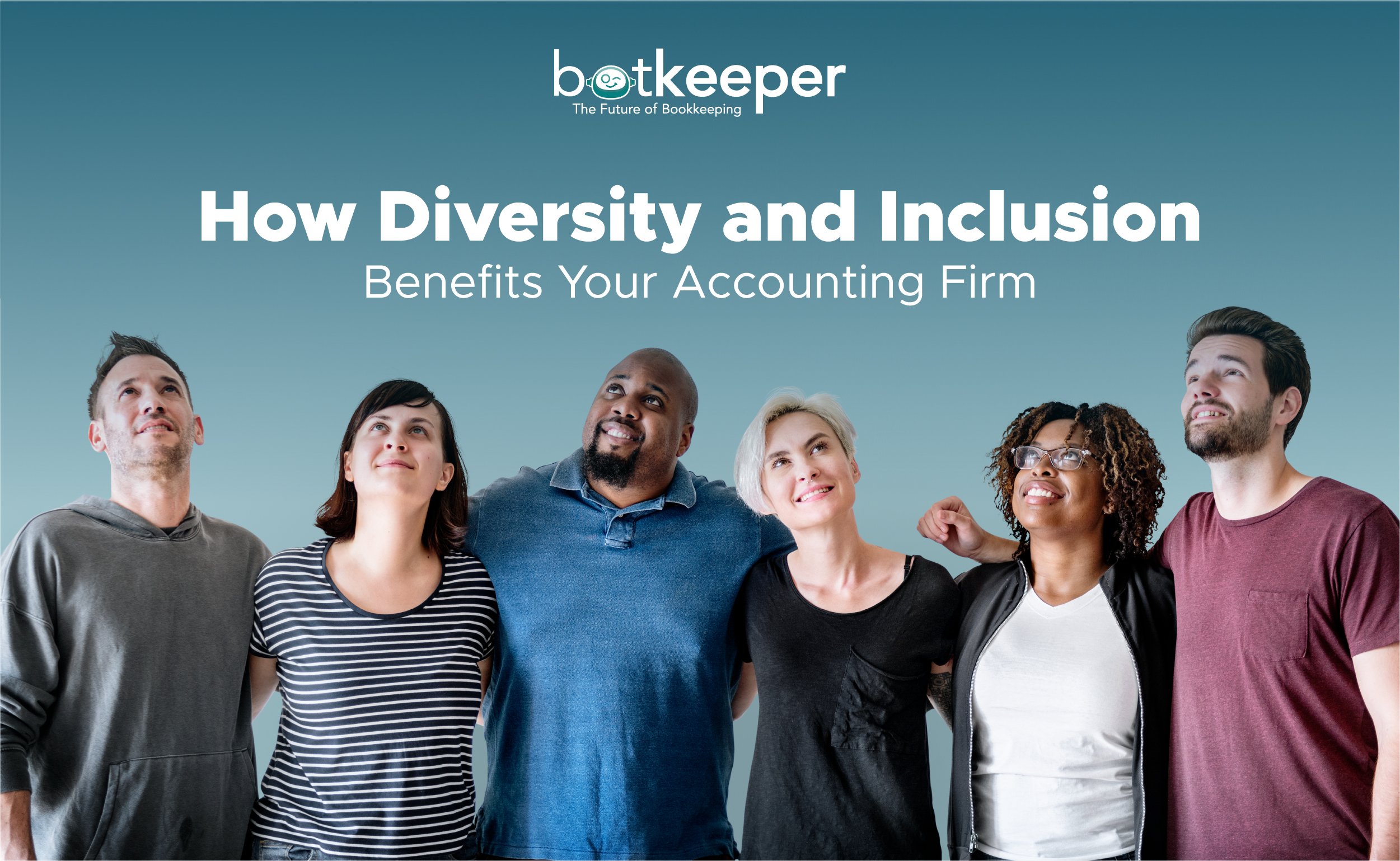4 min read
How Diversity and Inclusion Benefits Your Accounting Firm

There’s a preconception that the accounting industry is very “traditional.” And in many ways, that’s a positive; good accounting traditions help keep our world running, like filing taxes and supporting small businesses. And accountants are the heroes who make those important traditions happen! 💪
But despite the key functions that make accounting so great and so essential, there are other “traditional” ideas about accounting that need to change, including the industry’s focus on diversity and inclusion.
Embracing representation is crucial to the accounting industry’s ability to attract talented professionals and remain a stalwart to the global economy.
Even though many firms are already working toward creating a more diverse and inclusive industry today, many are still struggling to break away from the old traditions and transform their firms into better, more diverse and inclusive workspaces.
According to the AICPA, minority hiring is flat—and it has been since 2012. The interesting part is that it’s not an issue of availability; diversity in accounting education is significantly higher, and representation in academia is imperative to building a diverse industry.
So what about diversity and inclusion in firm leadership?
To put it simply, we’ve got a long way to go. But if there’s one thing we know about accountants, it’s that they can get the job done. It just starts with knowing how to get started.
We won’t claim to know everything about prioritizing diversity in the hiring process, but we talk with a lot of firms in our Accounting Partner Ecosystem, and we’ve learned a few things. But before we jump into actionable steps to take to help your firm nurture diversity and inclusion, let’s spend a moment on how we got here and why this issue matters.
A Struggle Going On For Decades
Although the discussion about inclusion and diversity has become more mainstream over the past decade or so, it’s been an issue that society has struggled with throughout history. Legislation passed around the late ’40s laid the foundation for inclusion across all areas of American society. But the reality is that it’s taken decades to see a positive change across all industries.
The lack of inclusion and diversity took center stage again around 2008 when the media started covering the lack of diversity across the booming technology sector in Silicon Valley. Now, there’s a renewed effort for businesses across all industries to change the makeup of their workforce.
Diverse and Inclusive Leadership Teams Perform Better
It’s not hard to recognize that having a more diverse and inclusive team has many advantages, beyond the fact that it’s the right thing to do. Different backgrounds, different approaches to problem-solving, diverse experiences, and creating a more effective environment for collaboration are some of the expected benefits of having a more diverse team.

The advantages are magnified when firm leadership begins to reflect a more diverse representation. In fact, studies show that more diverse companies, with diverse management teams, see as much as 19% additional revenue—due to their ability to innovate.
Now, this doesn’t mean that inclusion and diversity should be the only factors at play when considering a new hire. Having the required qualifications and necessary skills for the job should still be the main criteria.
That said, there’s substantial evidence that organizations with diverse leadership teams see potential to perform much better.
So how does a firm work toward creating a more diverse organization? Many accounting firms recognize that increasing their diversity and inclusiveness is what they want for the firm, but they don’t know how to take actionable steps toward that goal. Here are some of the most helpful steps you can take to build a more inclusive firm.
7 Steps Toward Building a More Inclusive Firm
1. Assess where you’re standing from a diversity standpoint
2. Recognize inclusion is an ongoing process
3. Educate your leadership team
Oftentimes the problem of a lack of inclusion and diversity derives from a lack of understanding of what the problem is. This is where investing resources into educating your leadership pays off in making lasting changes in your company’s culture. Leadership has a huge impact on how the rest of your organization perceives the firm’s commitment toward inclusion and diversity.
4. Establish employee feedback processes
One of the biggest ways organizations manage to increase the inclusiveness of their workforce is by listening to their employees. A big part of having an inclusive organization is making sure that all your employees know they have a voice, and that the leadership team actively listens.
How you implement these feedback processes will depend on the size of your firm, but whichever solution you choose to implement will pay off in changing the overall sentiment of your team.

5. Make adjustments to your hiring process
The goal of analyzing diversity and recognizing potential issues is to take action in your hiring process. If you find a correlation between your hiring process and any existing cultural bias(es), it’s important to adjust accordingly.
6. Celebrate and promote diversity on the regular
This often comes down to making sure you have the necessary channels in place to communicate with your whole team about cultural differences, which should be done genuinely, respectfully, and not as a matter of convenience.
7. Increase transparency across key issues
One of the best ways to communicate your commitment toward inclusion and diversity is by being transparent about key issues and current efforts to solve them. One prominent example is the pay gap between men and women.
Studies show that for every $1 that a man makes, a woman makes $0.81. Sharing the pay gap with your team (along with what you’re doing to make it disappear) shows your team the actions and results of your commitment toward inclusion and equality.
Here’s to the Diverse Future of Accounting
Salaries based solely on experience and performance, as well as transparent hiring practices that ensure inclusivity, go a long way toward a diverse accounting firm. Prioritize creating and maintaining a culture that opens the channels for feedback and celebrates our differences. And bring the entire team together to continuously improve.
There’s a growing number of resources available to help promote diversity and inclusion in the workplace, and one of our favorites is AICPA’s Diversity Initiatives. And of course, Botkeeper has an extensive network of firms and accounting thought leaders who are doing their part to create a better, more representative industry. Click below to get in touch with us, or leave a comment!




